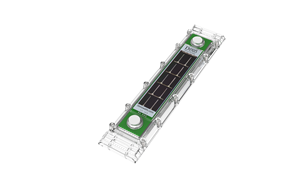Think about how performance is tracked across most disciplines. A sales team can use historical data and customer trends to create performance benchmarks. In the sports world, teams know they need to have a record in the top four (MLB), six (NFL), and eight (NBA & NHL) to make the playoffs.
Until recently, that type of benchmark that exists in so many other industries—so many worlds— was not consistent for solar assets. That’s why PowerOwners developed its newest service, Denowatts.
Denowatts is a service that specializes in reporting how solar assets perform. Comprised of a team of solar engineers and automation and software developers, PowerOwners’ delivers the “yardstick”, or benchmark, to the solar industry in order to better improve performance management.
Business Challenge

The need for benchmarking in the solar industry is simple: You can’t manage what you don’t measure. “There wasn’t a consistent benchmark in the business. Everyone measured performance differently through the collection of weather data,” said Dan Leary, Founder of PowerOwners. “So, our team set out to create the common denominator.”
While the monitoring industry excels at showing what an asset is doing, as Leary explained today, solar asset owners and managers need to know how assets are performing. To get there, Leary and the PowerOwners team developed a smart, connected sensor.
“In the past, weather station hardware was cobbled together, and there wasn’t a uniform way of doing it. It left a lot of asset operators frustrated with managing sensors that yielded inconsistent information.”
Solution
Denowatts revolutionizes solar performance verification in three ways:
- By deploying a streamlined smart sensor in place of a weather station
- Being delivered as a service
- Creating a new level of business intelligence for asset owners and managers
The cornerstone of the service is the Deno™ Smart Sensor—the common denominator. Developed in collaboration with Enginasion, the sensor measures sunlight and temperature to simulate an energy benchmark--the Denowatt™. “While the Deno is self-powered and incredibly streamlined—about the size of a small TV remote,” says Leary, “the most innovative feature is that it utilizes ‘fog’ computing to simulate a real solar array.
Fog computing means running computations at the device whereas with cloud computing, raw data is sent to a server for computation—a very data intense and costly approach that results in lower accuracy benchmarks. Thanks to the embedded processor, Deno differentiates itself from traditional weather stations by performing a real-time simulation on the device and then transmitting much smaller amounts of data. This means that Deno won’t run up costly data bills, yet literally will not miss a cloud passing by that would impact the performance of a solar array.”
The Deno Smart Sensor utilizes a Digi XBee-PRO® 900HP RF module to communicate. The sensor sends its data to an Ethernet gateway built using a Digi/Rabbit SBC – BL4S100. Digi Remote Manager gathers the data from multiple Deno’s and uses analytics that PowerOwners created to generate the data of interest for the commercial solar company.
“Deno acts just like a solar array would. It wakes up in the morning, powered by a solar energy harvesting circuit, and begins transmitting with the XBee to the Rabbit processor before the sun even clears the horizon,” Leary explained. “Everyone offers some off-the-shelf radios that often don’t meet expectations. They don’t broadcast as far, they need lots of repeaters, and they don’t get around buildings. We looked at a lot of products, and we decided that if we went with Digi’s XBee 900 and optimized it to use low energy, we could make the system work as simple and as reliability possible. Our clients have been extremely pleased with the power of the radio.”
To utilize the Denowatts service, clients subscribe and are shipped the equipment. After the client installs the Deno Smart Sensor and gateway, PowerOwners completes the data integration process to the client’s monitoring company.
“Deno replaces legacy weather stations that used to be much larger and significantly more complicated. Every aspect of Denowatts, from the sensors to their remote management, has been streamlined to best serve solar asset owners and operators,” explained Leary.
Results
Clients can monitor and understand their solar assets better than ever before. They can see clearly how their assets are performing, and how they compare to others.
“It’s not just a better piece of hardware, it’s a solution that can be remotely managed. If our device needs to be updated with new parameters or swapped out for recalibration, we can do that. Through Digi Remote Manager, Rabbit, and XBee Deno makes it happen and saves our clients tremendous time and resources.”